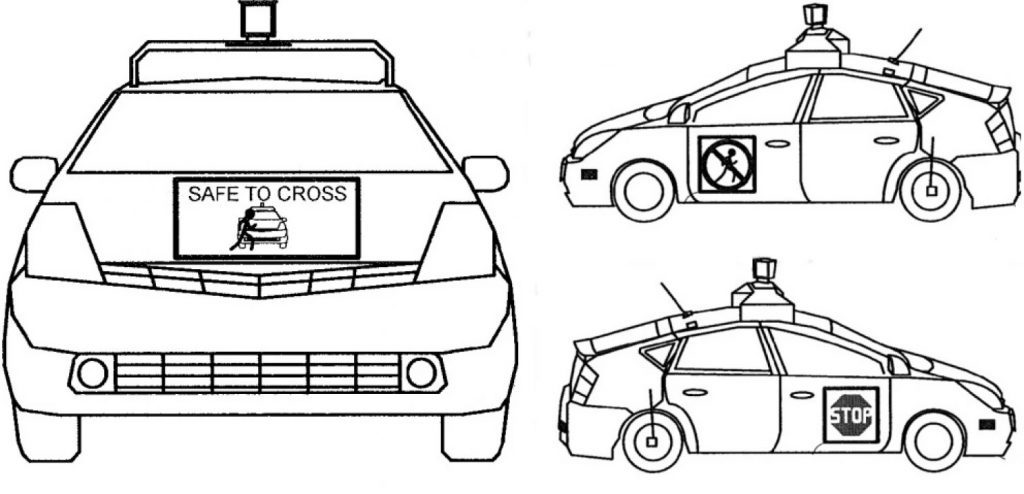It’s no secret that Google is working on a self-driving car, but the latest patent granted to Google by the United States Patent and Trademark Office (USPTO) reveals that the self-driving vehicle also will be able to interact with pedestrians.
According to the patent application titled, “Pedestrian notifications,” inventors Christopher Paul Urmson, Ian James Mahon, Dmitri A. Dolgov, and Jiajun Zhu describe an invention that would alert a pedestrian of the intent of the autonomous vehicle, as the above drawing from the USPTO patent filing shows.
The inventors note that the driverless vehicle would include sensors to detect a pedestrian about to walk in front of it. The sensors would determine if the path of the vehicle would be obstructed by the pedestrian. The vehicle’s computer would then determine the best way to respond to the presence of the pedestrian.
As an example, the inventors explain the computer would decide and communicate to the vehicle to slow down, yield, stop, or keep going, as well as give the pedestrian an audible notification. This audible alert, transmitted from a speaker outside the car, would tell the pedestrian what the vehicle is going to do.
The patent also indicates other possibilities of pedestrian notification, such as an electronic sign, a physical signaling device, electronic lights, or car screens. The drawings in the patent display a “Safe to Cross” sign below the windshield, a “Coming Through” sign on the front bumper, or a “Stop” sign on the front side door as other options.
The screen option offers the greatest flexibility because it can be placed anywhere on the vehicle’s exterior, such as a side door, a bumper, or the hood of the car, and can display traditional traffic signs and text messages. The screens also would be able to communicate with other motorists on the road.
As Google continues to test its self-driving vehicles invention, it adds enhancements based on the experiences of the fleet of test cars. Pedestrian notifications are necessary to replace those traditionally given by drivers of cars.
Rather than making eye contact or seeing a wave from the driver, pedestrians crossing in front of an autonomous vehicle would get signals from a speaker or screen on the car. Also under consideration are robotic hands and eyes to imitate gestures human drivers make to pedestrians and other drivers on the road.
The safety feature is certain to help Google through its regulatory requirements, which are slow coming from states. California, where Google is headquartered and operates 70 autonomous cars on public roads, has yet to establish operational regulations and safety standards for self-driving systems, indicating concerns about whether they are safe.
Google has conducted extensive testing on its self-driving cars, which have operated in autonomous mode for more than 1.3 million miles on public roads.
Google expects its self-driving vehicles to go mainstream as soon as U.S. states pass regulations for them. The company recently announced its driverless car unit, once part of Google X, will be a separate operating subsidiary.
Google isn’t the only company pushing state governments to speed up their work on regulations and safety standards for driverless vehicles. Apple recently made investments in a self-driving car, as has the car service company Uber.


